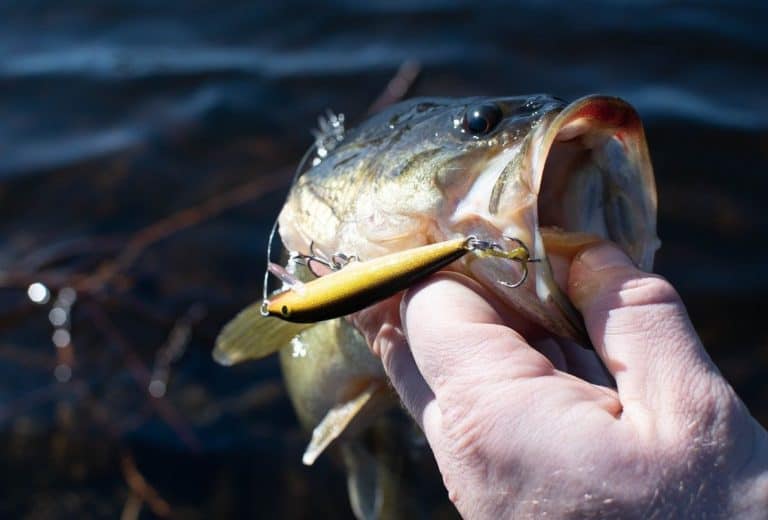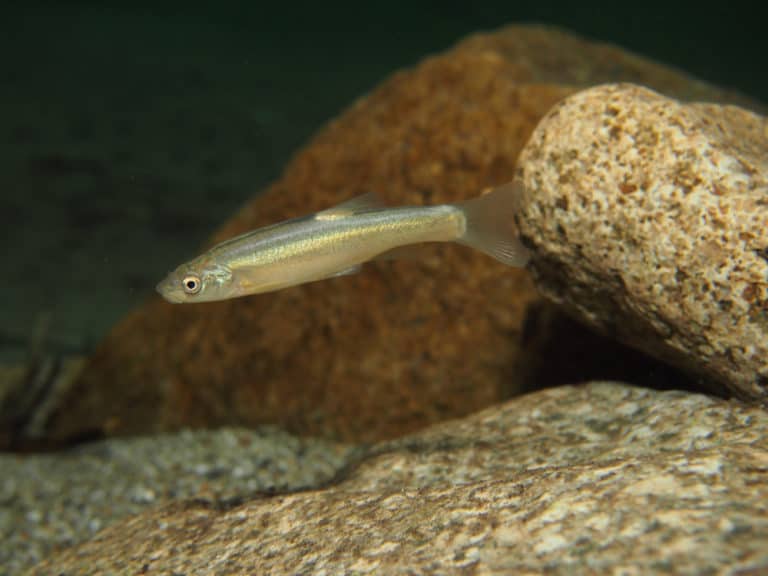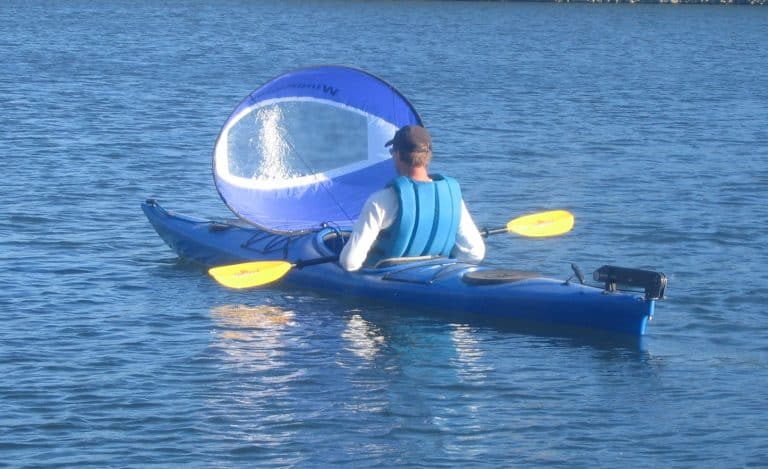Do Bass Have Teeth? How To Hold & Handle Bass
Bass fishing is one of the most popular forms of fishing throughout the US, and Canada. Whilst there is a lot of experienced bass anglers, the popularity of the sport does attract a lot of beginners who don’t yet know how to hold bass properly.
A quick browse on bass, and you’ll see a bunch of images of people holding bass at an angle by their mouths.
It seems like everyone does it, so is this the best way to hold bass? And, if you can hold bass by the mouth, do they have teeth?
In this post we are going to take a deep dive into this topic, answer the most common bass handling questions, and teach you how to implement the best fish handling practices.
Table of Contents
Do Bass Have Teeth?

Yes, bass have teeth. They aren’t anything like the teeth you will find on a Northern
They have the ability to break your skin, but it’s unlikely that whilst handling bass by the mouth, that you’ll have any nasty injuries.
Bass teeth are small and needle-like which they use to crush their prey. Many anglers who catch bass will report that they got ‘bass thumb’ one time or another.
Bass thumb isn’t serious. It’s similar to getting a friction burn from sandpaper, it only occurs if you are lucky enough to catch multiple bass in a short amount of time!
Bass Species Teeth
Largemouth Bass
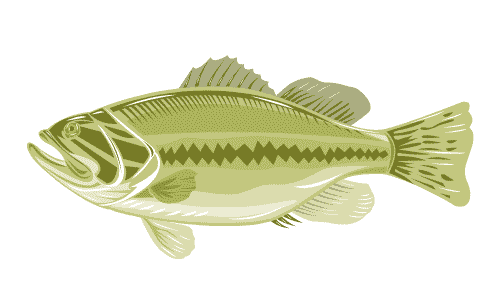
Largemouth bass has a row of small needle-like teeth that can cause abrasion to your fingers if continuously handled (bass thumb). The teeth aren’t long enough to cause any real damage to your hands, but it’s worth being aware that they are there.
Smallmouth Bass

Smallmouth bass do have teeth. They are similar to largemouth bass teeth, in that they are small and needle-like.
They can still cause irritation to your hands, the only upside is that their mouths are smaller, and therefore there are fewer teeth.
Striped Bass
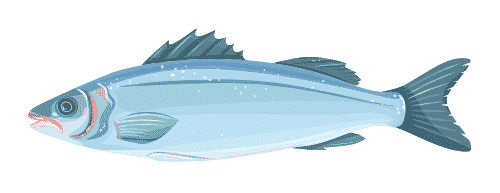
Just like other species of bass, striped bass also has teeth. They are again, small teeth built-in rows that have the ability to give you bass thumb. Striped bass doesn’t have big mouths, but they can snap their head back and forth aggressively so be cautious when handling striped bass.
Peacock Bass
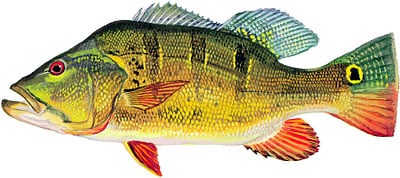
Peacock bass is a large powerful species of bass that are difficult to catch. Peacock bass has teeth; again it is a row of small, sharp, and densely packed teeth used to grab and crush their prey.
How To Hold Bass Fish
Many anglers, no matter how experienced haven’t ever been taught how to correctly hold fish. They tend to do what works best for them, and what seems to cause the least discomfort for the fish.
Whilst this is better than not caring for the fish at all, you may have been doing it wrong all along.
Below we will go over the different methods you can use to hold bass.
Top tips: Don’t grab any bass by the gill plate, not only might you damage the fish. But the gill plates are also razor-sharp and can easily cut you.
Keep fish handling to a minimum, hot hands can shock cold-water fish. And, this has the potential to kill the fish.
Vertical Hold
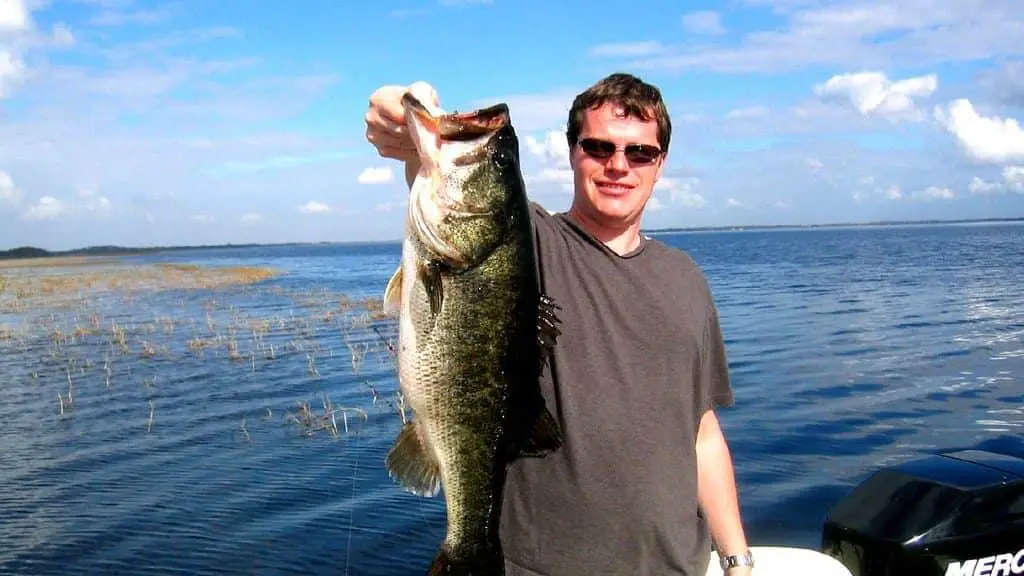
One viable method to hold bass is to suspend the bass vertically in an upright position with its mouth facing the sky. This method is favoured over angled holding, as it places less stress on the bass’ jaws and lips.
Place your thumb inside the lower lip of the bass, and push your fingers on the outside to get a good grip. Don’t over-squeeze, but make sure your grip is firm, and don’t let go!
Horizontal Hold
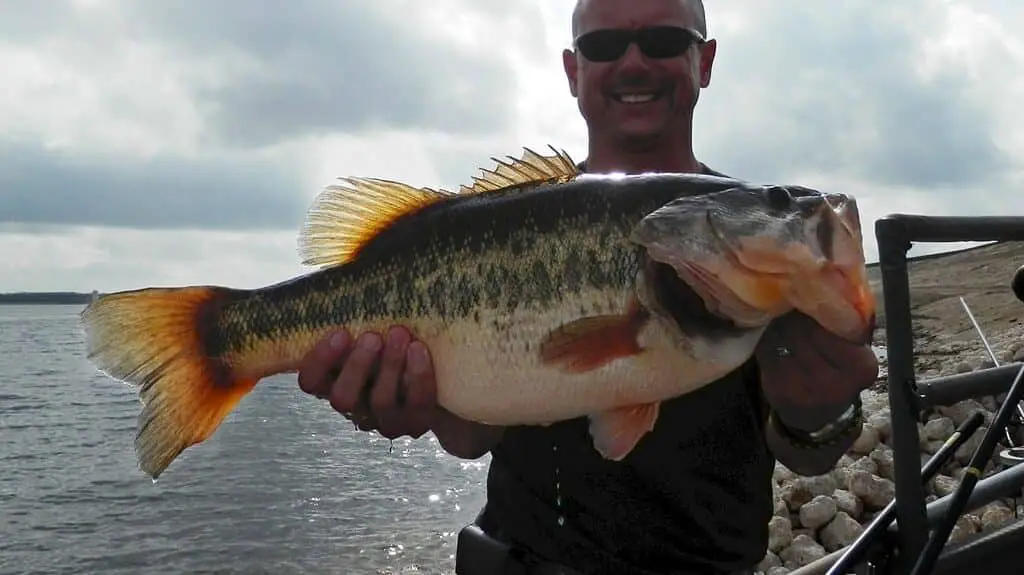
Another viable bass handling method is the horizontal hold, and if you catch a beauty it does make for a good photo opportunity. This particular hold won’t cause any harm to the fish if done correctly.
Ensure your thumb and fingers are positioned properly in the mouth (same method as above for vertical hold).
Once the fish is held vertically, ensure to support the weight of the fish with your other hand, just behind the belly/tail region of the fish.
Make sure to take the weight of the body straight from vertical holding, don’t start to angle the fish then take the weight. Especially with larger bass as you may damage their mouth and jaw.
Angled Hold
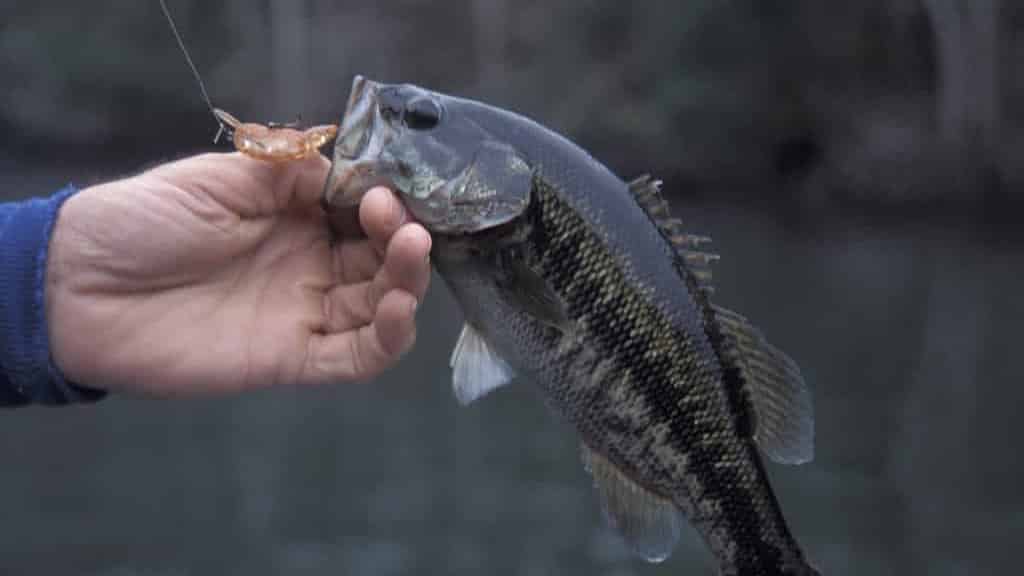
Angled holds are not the best method for holding bass as more pressure is placed upon the jaws due to the body being suspended at an angle.
You can however use this method for small bass as their body isn’t heavy enough to cause jaw damage. But if you land any medium-large bass then you should opt for the vertical or horizontal bass holding methods.
How To Unhook a Bass
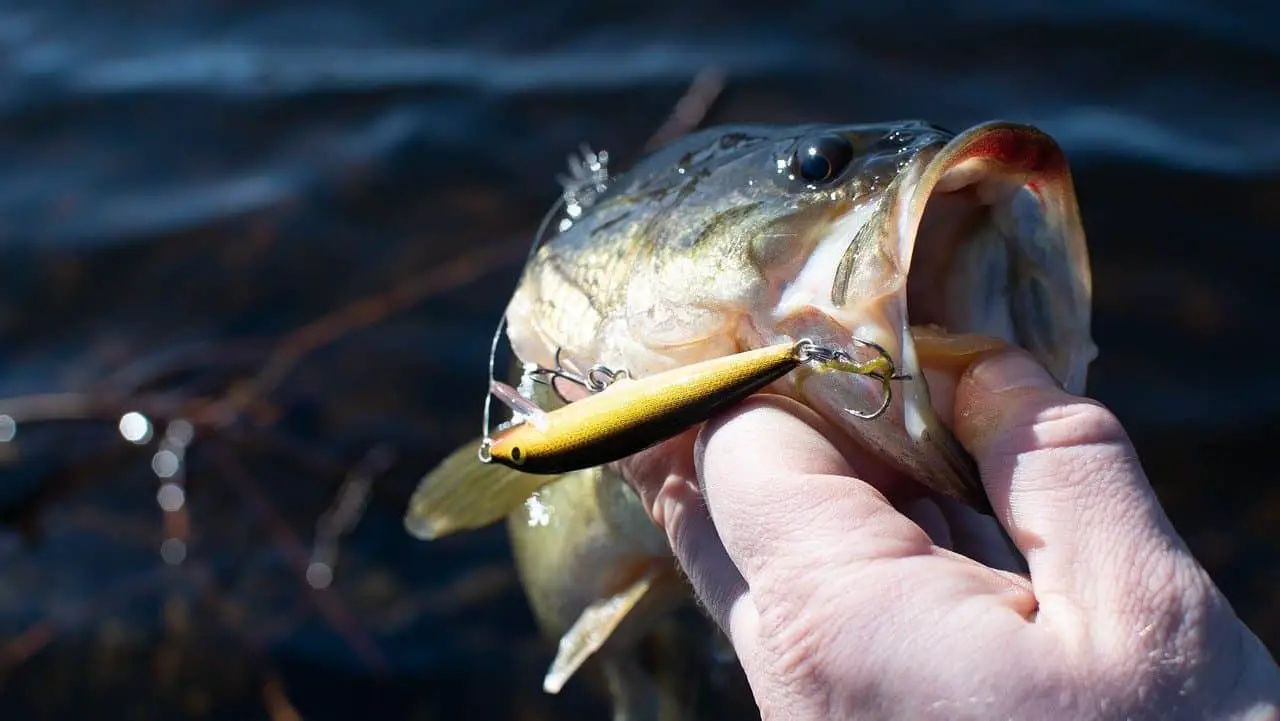
Unhooking a bass is the same as pretty much any other fish. You just have to make sure you always unhook the fish safely.
Once your bass is close to the shore, or your boat, try your best to safely grip the fish via the jaws using your thumb and finger in the same method as mentioned above for holding the bass (picture above for reference).
Once you have a firm grip on the bass, and it is no longer thrashing around as you could cause harm to the fish if it jerks its head whilst you are removing the hook.
You can gently slide the hook out of the lip. If the hook has been buried deeper into the mouth and you can’t get to the hook, you could use a fish hook removal tool.
If you are using a boat, and landing bass via a net. Sometimes placing a sea-water or lake-water soaked towel over the fish can calm it down before removing the hook.
Using the correct sized fishing hooks is the best way to only achieve lip-hooked fish, and to avoid any hooks in the gut.
What if your fish hook is stuck in the gut?
In some instances, you will deeply hook the fish in the gut. Anf unfortunately, when this happens there is usually no alternative other than to cut the line and leave the hook in the gut of the fish.
Cut the line as close to the eye of the hook as possible, and release the fish in your usual manner.
It’s hard to say as to whether fish with hooks in their gut survive. Stainless steel hooks won’t rust and they’re likely to cause the fish issues in the future.
Most modern fishing hooks are made from carbon steel, whilst they need replacing more often. At least if they are left in the fish, they will rust away over time.
Whilst some fish will of course die due to a hook being left in their gut. Most anglers agree that if it has to be done, at least the fish has a fighting chance at survival.
Releasing Bass Properly
Releasing the fish properly is just as important as getting it ashore or aboard and removing the hook safely. Remember, the goal is to return the fish as safely as possible, whilst causing the least damage possible.
Once you have safely landed the bass and properly removed the hook, the next step for most people is to weigh, measure, and take pictures. Only weigh and measure if you have to – usually in competition scenarios. Otherwise, keep handling to a minimum.
Using a landing mat is a great way to protect the fish on the floor and they can be used in freshwater, saltwater, and boat fishing. They also reduce the chance of shocking the fish from your hot hands.
The next step is to simply place the unhooked fish back into the water as safely as possible.
If you are on a boat, place the fish from the lowest point possible. For some reason, some anglers resort to throwing or dropping bass from a high height – don’t do this.
The surface of the water can hit the bass very hard if dropped from a high height. Think back to belly-flopping as a child.
If you can smaller bass on the beach, it’s best to wade out beyond the breaking waves and gently place them back into the water. Small fish might not be strong enough to swim past the breaking waves, and they’ll end back upon the shore.


